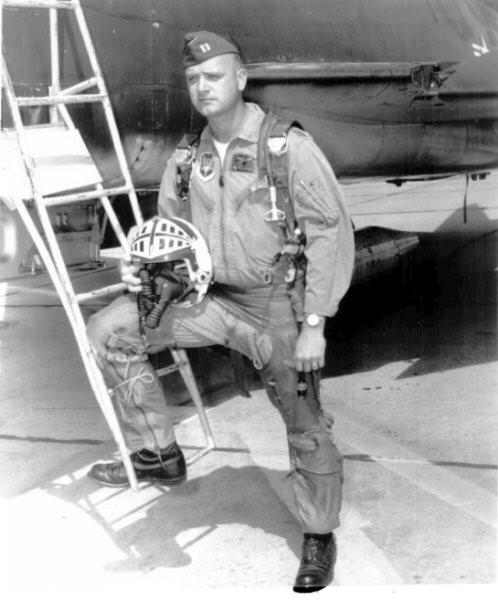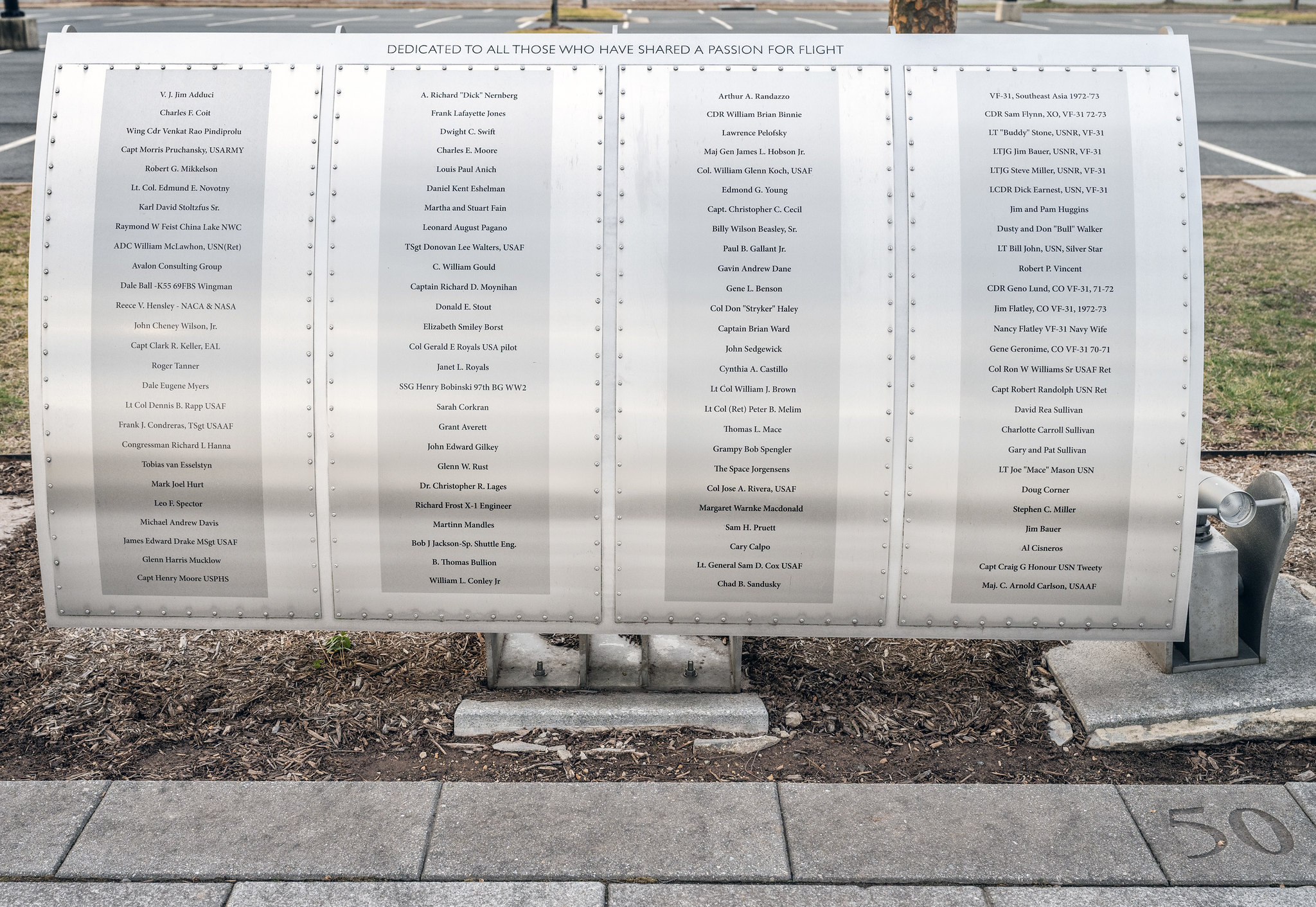Lt Col Dennis B. Rapp USAF

Foil: 50 Panel: 1 Column: 1 Line: 17
Wall of Honor Level: Air and Space Leader
Honored by:
Burt Rapp
Lt Col Dennis "Cigar" Rapp, USAF
After graduating from the University of Oregon and being commissioned a Second Lieutenant in the United States Air Force (USAF) on July 5th, 1957, Dennis Rapp began Air Force Pilot Training in the fall of 1957 as a flight student at Malden Air Base (AB), Missouri flying the T-34A Mentor and the T-28A Trojan piston aircraft in primary and intermediate Flight School. Dennis Graduated from United States Air Force Jet Pilot Training flying the T-33A Shooting Star at Vance Air Force Base (AFB), Enid, Oklahoma in 1958.
Upon receiving his wings, Dennis attended Mountain Survival training at Stead AFB, Reno, NV followed by Advanced Fighter Weapons Training at the 3525th Pilot Training Group, Williams AFB, Arizona, flying the F-86F Sabre Jet.
Due to a high demand for Jet Bomber Pilots during the height of the Cold War with the Soviet Union, Dennis was assigned to fly the B-47E Stratojet; with training at the 4347th Combat Crew Training Wing, McConnell AFB Topeka, Kansas in early 1959, with a follow on assignment to Mountain Home AFB, Idaho with the 9th Strategic Aerospace Wing (SAW), 5th, 99th and 658th Bomb Squadrons until the Spring of 1964. Frequent Bomber Alert status included deployments to Elmendorf AFB, Alaska; Andersen Air Base (AB) in Guam, and Yokota AB in Japan. He also deployed for a nuclear deterrence mission during the Cuban Missile Crisis in October 1962.
After the Air Force retired the B-47E Stratojet in 1964/65, and as a graduate of Fighter Weapons Training, Dennis Rapp was transferred to the 4514th Combat Crew Training Squadron at Luke AFB, Arizona in the summer of 1964 to fly the F-100D and the F-100F Super Sabre. Dennis Rapp next received orders to Cannon AFB, Clovis New Mexico, where he was first assigned to the 474th Tactical Fighter Wing, 430th Tactical Fighter Squadron “Tigers” in 1964, with deployments to Misawa AB Japan, and Kunsan AB South Korea for Nuclear Alert duty.
Upon notification that Cannon AFB was sending F-100 units to Vietnam, Dennis was transferred to the 27th Tactical Fighter wing, 481st TFS "Green Crusaders". After completing Parachute Jump School at Ft Benning Georgia and Sea and Jungle Survival Training at Clark AB in the Philippines, Dennis deployed in June 1965 for a 6 month combat tour in Vietnam, flying more than 100 combat missions over the Mekong Delta in the F-100D and F-100F Super Sabre, while based out of Tan Son Knut AB Vietnam. These combat missions included qualification in hazardous night delivery of conventional weapons in a program known as "Night Owl" where flares were used to illuminate the target area, making these night missions much more challenging and dangerous than daylight weapons delivery.
Returning to Cannon AFB after his tour in Vietnam, Dennis became an F-100 Super Sabre Instructor Pilot from 1966-1968, helping establish the 27th TFW as a Combat Training Wing for pilots who would be assigned to Vietnam.
Because of his combat experience, Dennis was selected to become a Forward Air Controller (FAC), attending training at the 1st Special Operations Wing (SOW), 4410th Combat Crew Training Squadron (CCTS) located at Hurlburt Field, Fort Walton Beach Florida in June 1968. As one of the first 12 pilots in the USAF qualified to fly the newly arrived OV-10A Bronco in combat in Vietnam, Dennis was assigned to the 504th Tactical Air Support Group, 19th and 23rd Tactical Air Support Squadrons (TASS) flying out of Bien Hoa Vietnam and Nakom Phenom Thailand, and flying FAC missions over the Ho Chi Min Trail in Vietnam and Laos. During his second combat tour, Dennis was promoted to Major, and was selected as a Detachment Commander for the 23rd TASS. He flew over 100 FAC missions and was also responsible for orienting newly arrived USAF and Australian FAC pilots to the Southeast Asia Theater of Operations and in flying missions on the Ho Chi Min Trail. Dennis was awarded the Distinguished Flying Cross (DFC) for bravery under fire while directing fighter missions onto targets during hazardous combat conditions. He completed his second combat tour in June 1969.
Dennis Rapp was then assigned to the Air University (AU) staff at Maxwell AFB, in Montgomery Alabama as an instructor in charge of academics at Squadron Officer School (SOS) from August 1969 until July 1972. There he also flew the C-47 Gooney Bird and T-33A Shooting Star.
From Alabama, Dennis received orders to be a Tactical Air Command (TAC) programmer for all USAF Fighter Aircraft at TAC Headquarters, Langley AFB, in Hampton Virginia from August 1972 to February 1974. There he also flew the T-33A.
After Promotion to Lieutenant Colonel, Dennis Rapp received orders to the Pentagon from March 1974 until August 1977 where he was responsible for the placement and landing rights of all Air Force Reserve, Air National Guard and USAF tactical fighter aircraft in the United States. During this assignment, Dennis was checked out in the T-39 Sabreliner at Andrews AFB, Maryland.
After a distinguished 20 year flying career in the US Air Force, serving his country with two combat tours and earning a Meritorious Service Medal (MSM), Distinguished Flying Cross (DFC) and numerous air medals flying in over 10 different types of aircraft, Dennis retired in August 1977 and moved to Reno Nevada. He passed away on December 7th, 2024.
Wall of Honor profiles are provided by the honoree or the donor who added their name to the Wall of Honor. The Museum cannot validate all facts contained in the profiles.
Foil: 50
All foil images coming soon.View other foils on our Wall of Honor Flickr Gallery
